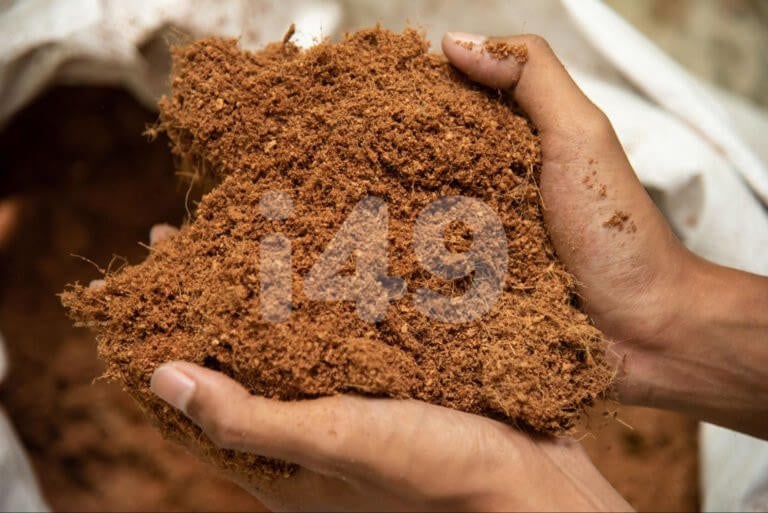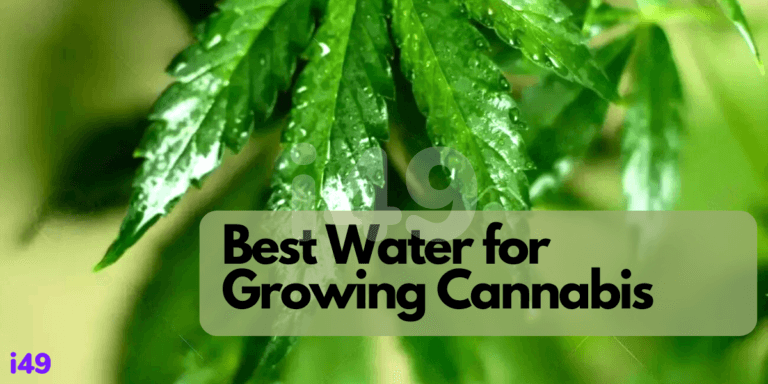How to Grow Much Larger Buds with the Right Nutrients
The goal of every marijuana grower is to enjoy big, beautiful buds at the end of harvest. With bigger buds, there will be much more to enjoy when it comes time to smoke. Thankfully, it is not too difficult to get the big buds you desire. With the right nutrients, your plants will thrive, and their buds will grow large and packed with trichome resin. Without further ado, let us get started on helping you develop the biggest buds you ever imagined.
The Buds are the Most Important Part of the Plant
Although the leaves and stems can undoubtedly be used for making tinctures and hash, the buds are considered the prized part of the cannabis plant. Although the leaves do contain THC, the buds have higher concentrations.
Whether you are growing for selling purposes or personal, big buds should be your goal. The buds are the parts of the plant that begin to develop during the flowering stage. You will see these start to develop as tiny white hairs.
If you take the right steps and work hard, it is possible to produce incredibly large buds that are full of potent THC, no matter what strain of cannabis plant you are growing.
When growing marijuana, make sure to keep the male plants away from the females, or the female plants will become pollinated, and the buds will have reduced THC as well as contain seeds.
Typically, female plants are going to begin to flower about two weeks after males begin to produce pollen sacs. The buds will show up at the tip of the branch and will be round and hairy.
How to Speed Up Bud Growth
When cannabis plants enter the flowering stage, they need to be able to put all their effort into growing buds. If the plant’s health is compromised, it can stop budding and try to preserve nutrients.
Marijuana plants, just like all plants, require nutrients to be able to thrive. Without the proper nutrients, your marijuana plants will begin to yellow and eventually shrivel up and die.
There are multiple nutrients your cannabis plants will need throughout the growing cycle. During the vegetative growth phase, nitrogen is most important because it encourages more significant growth. The vegetative stage is what sets the foundation for budding, so proper nutrient levels during this stage is vital. The following are the essential nutrients and micronutrients that help increase plant growth and eventual bud development.
- Nitrogen (macronutrient)
- Phosphorous (macronutrient)
- Potassium (macronutrient)
- Calcium (micronutrient)
- Sulfur (micronutrient)
- Magnesium (micronutrient)
- Boron (micronutrient)
- Zinc (micronutrient)
- Copper (micronutrient)
When your cannabis plants begin flowering, potassium becomes a vital nutrient for the creation of buds. Most cannabis growers purchase their fertilizer blends, though it is possible to make fertilizer at home.
You will need to purchase a fertilizer blend that is intended for use during the specific growth period your plants are in at the time. If you are growing in soil, choose a combination that is made for soil. There are also hydroponic nutrient liquids.
When purchasing nutrients, the container should give you information on the ratio of each nutrient. Although nitrogen, potassium, and phosphorous are going to be the three most vital nutrients, make sure to look for fertilizers that also contain a mix of micronutrients to give your plants the full range of nutrients they need for healthy growth.
Use the Right Fertilizer at the Correct Time
To ensure a healthy level of growth at each stage, you must know what fertilizers to use and when. Timing is essential for the most significant bud production.
During the seedling stage, few nutrients are needed because the root system is still developing. You will only need to begin adding nutrients when your plants reach the vegetative stage.
While vegetative growth is occurring, it is wise to choose a fertilizer that contains an equal ratio of all three key nutrients. A 20-2-20 mixture of nitrogen, phosphorous, and potassium will give you the best results, especially if you are new to growing cannabis and do not know how to tweak each nutrient for growth gains.
Cannabis plants use a lot of nitrogen during the vegetative stage, so they must receive plenty. A lack of nitrogen will result in stunted growth and wilting and yellowed leaves. If your plants begin to turn yellow, a lack of nitrogen is likely the culprit.
When cannabis enters the flowering stage, the nutrient needs begin to change. While the vegetative stage requires a lot of nitrogen, there is less need for nitrogen during the flowering stage.
During the flowering stage, extra phosphorous and potassium become necessary. Through the flowering phase, your cannabis plants will respond better if you use an NPK ratio of 10-3-10. Phosphorous is a key nutrient that will help to ensure your cannabis plants produce bountiful buds during the flowering stage.
The closer your plants grow to harvest time, the fewer nutrients they will require. Towards the end of the flowering stage, you can slowly decrease your feedings and eventually stop them altogether.
Macronutrients are Vital for All Stages of Cannabis Growth
Macronutrients are essential nutrients your marijuana plants cannot live without, or they will die. Nitrogen, phosphorous, and potassium are the top three nutrients marijuana plants need for healthy growth and the development of big buds. Many growers are surprised to learn cannabis has similar nutrient needs as tomatoes, and they grow perfectly together.
Nitrogen
Nitrogen is an especially vital nutrient during the vegetative stage. Nitrogen is essential for photosynthesis and helps with chlorophyll production. Because it helps incite chlorophyll production, one of the telltale signs of nitrogen deficiencies are yellowing leaves.
Nitrogen also helps to increase the growth rate of stems and leaves, increasing the size of the plant exponentially through the vegetative stage of growth. This nutrient also helps to ensure the plant is hardy and will not become damaged so easily.
A lack of nitrogen will begin to affect the oldest leaves first. Therefore, you will see yellowing beginning to occur at the lower levels of the plant at first. It is important to note that nitrogen levels will also drop when the soil or water temperature is too low, so it is crucial to monitor the temperature regularly.
Phosphorous
Phosphorous is the second most vital nutrient and becomes even more critical when the flowering stage begins. If you want big buds, phosphorous is your friend. Phosphorous is essential from seedling to harvest and helps with vigorous root growth.
The overall physical strength of your marijuana plants is going to be dependent on the right phosphorous levels. This nutrient helps form flower clusters and is responsible for terpene production.
A lack of phosphorus will result in a significant reduction in the growth rate of your marijuana plants. You will also notice smaller leaves begin to dry out quickly. The leaves will develop a purplish edge, and they will take on a burnt appearance. If phosphorous becomes too depleted in your plants, it will also result in lowered potassium levels.
Potassium
Potassium is the third macronutrient that is vital to the health and growth of cannabis plants. Potassium is essential for proper plant metabolism, which is the process whereby the plants convert the sun’s energy into compounds that help it thrive and survive.
Potassium is especially important during the flowering stage and plays a vital role in the development of big, beautiful marijuana buds. This nutrient is also responsible for helping in the formation of flower clusters during the flowering stage.
If potassium is lacking in your marijuana plants, it will begin to show in the rate of growth. You will also notice changes in the appearance of the leaves. Plants that are lacking potassium will start to develop browning on the edges of the leaves, and you will see curled edges.
Micronutrients are Also Important for Big Buds
While the three macronutrients above are vital for significant bud development, you cannot ignore micronutrients if you want to develop big flower clusters that are dripping with terpenes. Terpenes are what give marijuana that signature aroma everyone loves. Trace elements will help to keep your plants at their healthiest level of growth.
Calcium
Calcium is one of the most critical micronutrients, and it should always be a part of any nutrient solution you are using on your plants. Calcium is needed for cell wall production and the growth of stems and leaves. If your plants are lacking calcium, you will notice the leaf edges become hooked and distorted.
Magnesium
Magnesium helps to incite the production of chlorophyll, which is essential for photosynthesis. The physical structure of leaves and stems is protected by magnesium. If your plants are deficient in magnesium, the leaves will begin to wither and yellow.
Sulfur
Sulfur is responsible for protein production. It also encourages chlorophyll production and plant growth. If this nutrient is missing or lowered, you will see smaller leaf growth and diminished growth overall.
Manganese
Manganese helps with enzyme and chlorophyll production. When this mineral is not present in the right numbers, gray and white spots can begin to develop on the leaves. Lowered manganese can also lead to iron depletion.
Boron
Boron is also an essential micronutrient that should never be ignored. This nutrient helps with the production of leaves and controls their color. Boron is also crucial for bud growth. Lowered levels will cause death that starts at the tips of leaves and eventual bud destruction.
Conclusion
If you want big marijuana buds, the right nutrition levels are essential. Check for signs of nutrient deficiencies often, so the health of your cannabis plants will be protected. Starting with high-quality seeds from i49seeds.net will set growers up well.











